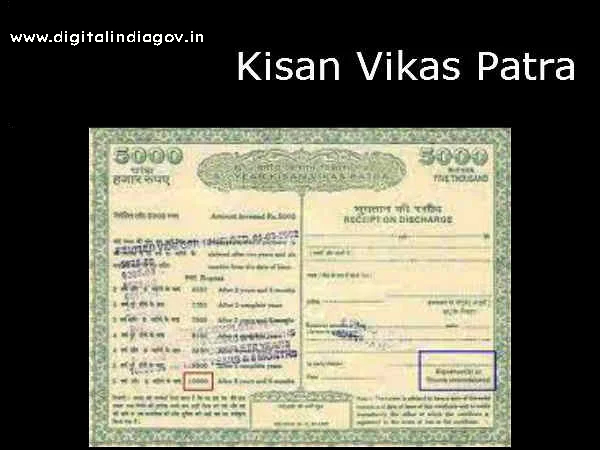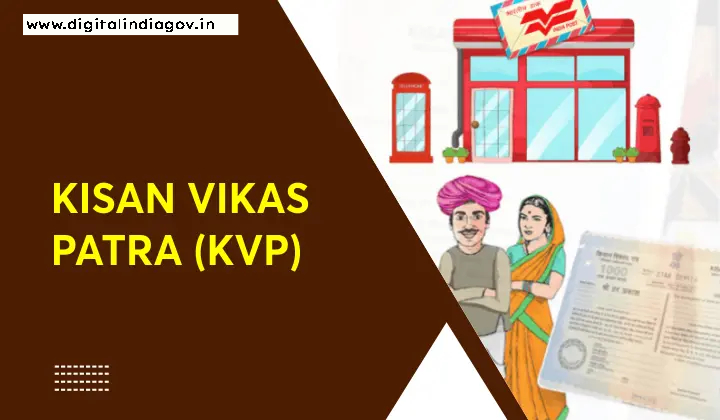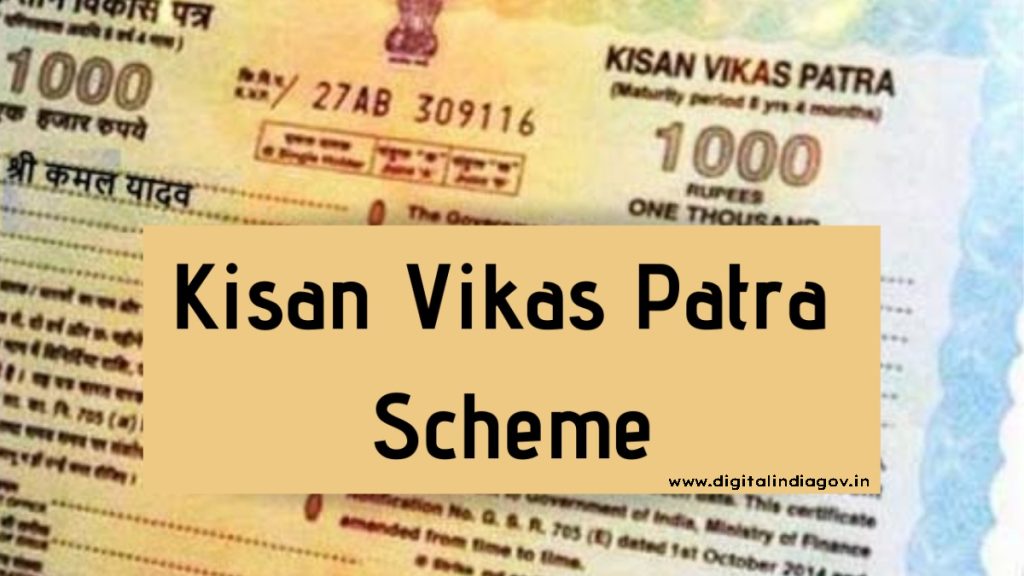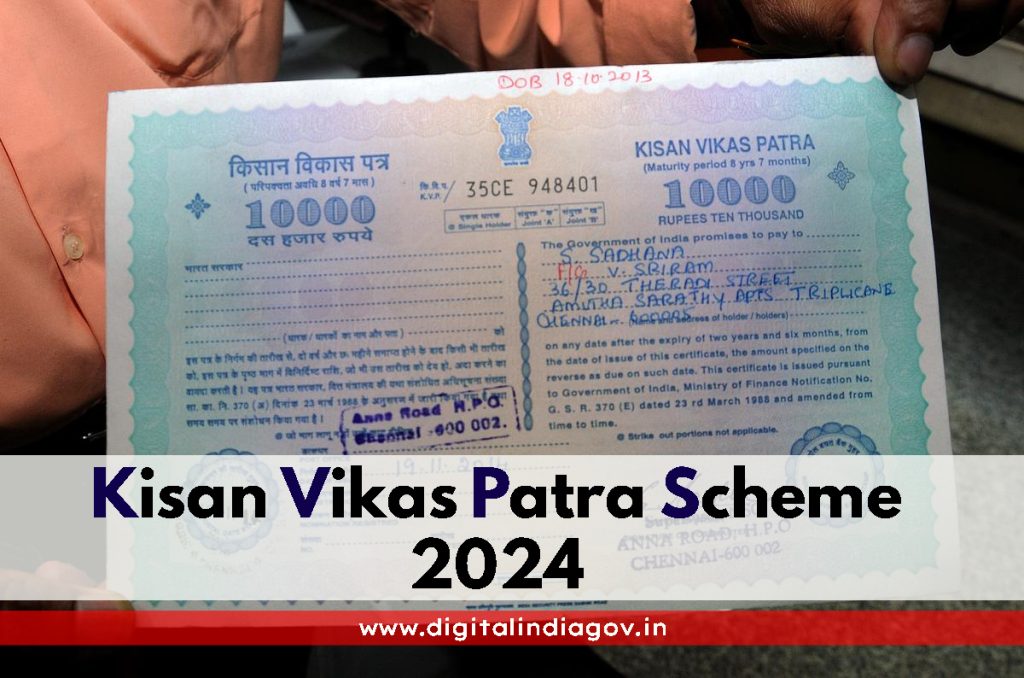Kisan Vikas Patra Scheme:- The Kisan Vikas Patra scheme is one of those ways to save money that allows people to gradually develop wealth without worrying about the risks involved. In an effort to encourage individuals to save money and form wise investing habits, the Indian government established one of the most popular savings plans to date. In order to get the most out of investing in the Indira Vikas Patra or Kisan Vikas Patra schemes, people must educate themselves as much as possible on the schemes in question.
Contents
What is Kisan Vikas Patra Scheme?
Introduced as a small savings certificate initiative in 1988, the Kishan Vikas Patra scheme. Encouraging people to acquire long-term financial discipline was its principal goal. This program’s name originated because, when it first launched, farmers were its primary target audience. However, anyone who meets its eligibility requirements can now invest in it. The Kisan Vikas Patra post office system offers guaranteed returns to individuals and has a predetermined tenure of 113 months. It is available to anyone in the form of a certification from a few public sector banks and any India Post office branch.

Also Read:- UP Free Tablet Smartphone Yojana, Digitize India, Digitize India Platform, Work From Home Jobs, Celebrity Phone Number
Types of certificates available
The following categories of Kisan Vikas Patra certificates are available:
- Single-holder certificates: Adults can present these certificates on their own behalf or on behalf of minors.
- Joint “A” Type Certificate: You can pay the survivor or both holders jointly for this type of certificate, which is awarded to two adults jointly.
- A Joint “B” Type Certificate can be paid to the survivor or to each of the holders; it is provided to two individuals jointly.
Kisan Vikas Patra Scheme Eligibility
It is possible to invest KVP in the following:
- A citizen of India is required to apply.
- At least eighteen years of age is required of the applicant.
- For the benefit of a minor or someone mentally ill, an adult may apply.
- One cannot be a Non-Resident Indian (NRI) or a member of a Hindu Undivided Family (HUF) in order to invest in KVP.
Who should invest in the Kisan Vikas Patra Scheme?
Any Indian citizen who is at least eighteen years old can obtain a Kisan Vikas Patra from the local post office. This is particularly appealing to those without bank accounts who live in rural India. A KVP may also be bought on behalf of a minor or in conjunction with another adult. Remember to provide the minor’s birthdate and the parent or guardian’s name. Not a HUF or an NRI, but a trust can purchase one as well.
For risk-averse people with extra cash that they might not need anytime soon, KVP is an excellent option. Everything is based on your goals and risk tolerance.
Better options for those looking for tax-saving plans include the Public Provident Fund, National Savings Certificates, and tax-saving bank FD schemes. You have the Equity Linked Savings Scheme (ELSS) if you’re willing to take on some risk. So, capitalize on your financial advantages.
How KVP accrues interest & doubles the money – an example
A low-risk scheme is KVP. The table below shows the returns over time for an investment of Rs 1,000.
| Time | Amount Repaid (Rs) |
| 2.5 years but < 3 years | 1173 |
| 3 years but < 3.5 years | 1211 |
| 3.5 years but < 4 years | 1251 |
| 4 years but < 4.5 years | 1291 |
| 4.5 years but < 5 years | 1333 |
| 5 years but < 5.5 years | 1377 |
| 5.5 years but < 6 years | 1421 |
| 6 years but < 6.5 years | 1467 |
| 6.5 years but < 7 years | 1515 |
| 7 years but < 7.5 years | 1564 |
| 7.5 years but < 8 years | 1615 |
| 8 years but < 8.5 years | 1667 |
| 8.5 years < 9 years | 1722 |
| 9 years but before maturity | 1778 |
| On maturity of certificate | 2000 |

Also Read:- Pradhan Mantri Suraksha Bima Yojana
Historic Interest Rates of Kisan Vikas Patra Scheme
| Quarter/Financial Year | 2016-2017 | 2017-2018 | 2018-2019 | 2019-2020 | 2020-2021 | 2021-2022 | 2022-2023 | 2023-2024 |
| April-June | 7.8% (will mature in 110 months) | 7.6% (will mature in 113 months) | 7.3% (will mature in 118 months) | 7.7% (will mature in 112 months) | 6.9% (will mature in 124 months) | 6.9% (will mature in 124 months) | 6.9% (will mature in 124 months) | 7.5% (will mature in 115 months) |
| July-September | 7.8% (will mature in 110 months) | 7.5% (will mature in 115 months) | 7.3% (will mature in 118 months) | 7.6% (will mature in 113 months) | 6.9% (will mature in 124 months) | 6.9% (will mature in 124 months) | 6.9% (will mature in 124 months) | 7.5% (will mature in 115 months) |
| October-December | 7.7% (will mature in 112 months) | 7.5% (will mature in 115 months) | 7.7% (will mature in 112 months) | 7.6% (will mature in 113 months) | 6.9% (will mature in 124 months) | 6.9% (will mature in 124 months) | 7.0% (will mature in 123 months) | |
| January-March | 7.7% (will mature in 112 months) | 7.3% (will mature in 118 months) | 7.7% (will mature in 112 months) | 7.6% (will mature in 113 months) | 6.9% (will mature in 124 months) | 6.9% (will mature in 124 months) | 7.2% (will mature in 120 months) |
Steps to invest in Kisan Vikas Patra and documents required
As explained below, investing in Kisan Vikas Patra is easy.
- Step 1: Gather Form A, the application, and complete it with the required data.
- Step 2: Send the completed form to the bank or post office.
- Step 3: If an agent is used to make the KVP investment, the agent must complete Form A1. These forms are also available for online download.
- Step 4: You must complete the obligatory Know Your Customer (KYC) process and provide a copy of your ID and proof of address (PAN, UID, voter ID, driver’s license, or passport).
- Step 5: You have to make the deposit as soon as the documents are confirmed. Cash, a locally executed cheque, a pay order, or a demand draft made out in the name of the postmaster.
- Step 6: Unless you pay by demand draft, pay order, or check, you will receive a KVP certificate right away. This must be kept secure since you will have to turn it in when you are old enough. You have the option to ask them to email the certificate to you.
To put it briefly, invest right away in Kisan Vikas Patra if it appears like a good financial move and fits with your objectives. It is not too difficult to open and operate. All you have to do is visit the closest post office once with the necessary funds.
Nomination
Certificate holders who are single or joint holders may nominate someone by completing Form C at the time of purchase. In the event that the single holder or both joint holders pass away, you may designate any individual to receive the benefits of the certificate.
If the nomination is not made at the time of purchase, it may be made at any point after the certificate is purchased but before maturity by completing the properly completed Form C. This includes single holders, joint holders, and the surviving joint holder. Deliver it to the bank employee or postmaster where the certificate is kept on file.
On the other hand, if a minor applies for and receives the certificate, no nomination may be made on their behalf. In this scenario, if a nomination is made by the certificate holder or holder, Form D will be used to cancel or modify the certificate.
It is necessary for you to submit separate applications for nomination, cancellation, or modification when you have multiple certificates registered on various dates. Such an application will be recorded on the certificate and will take effect from the date of registration. First-time nominations are accepted at no cost. There will be a fee of Rs. 20 per application for any further nominations or cancellations.

Also Read:- Sukanya Samriddhi Yojana In Hindi
KVP helpline number
KVP customer care number – 1800 266 6868
FAQs
Q. Is it possible for the post office to transfer my KVP to the bank?
Ans- Yes, by making an application using Form B at your post office or bank, you can transfer your certificate from that location to any other post office or bank. With the exception of Joint “A” type certificates, where one joint account holder may sign the application in the event of the death of the other, the application must be signed by the holder or holders.
Q. Does KVP have taxes?
Ans- Since KVP is not deductible under section 80C, the returns are fully taxed. On the other hand, withdrawals made after the plan matures are not subject to tax deduction at the source (TDS).
Suggested Link:- Our Jharkhand
@PAY
